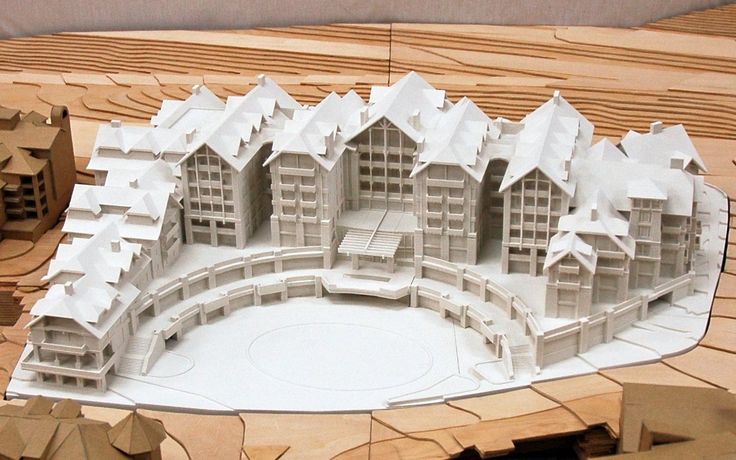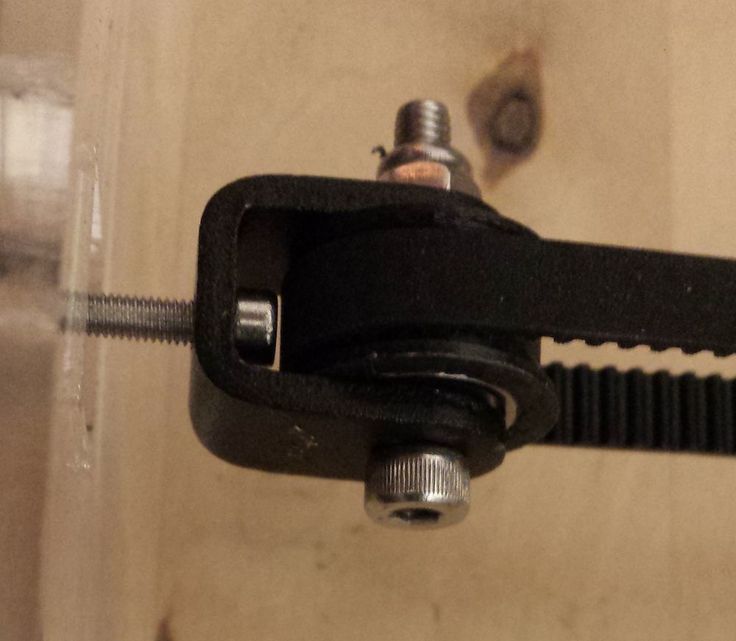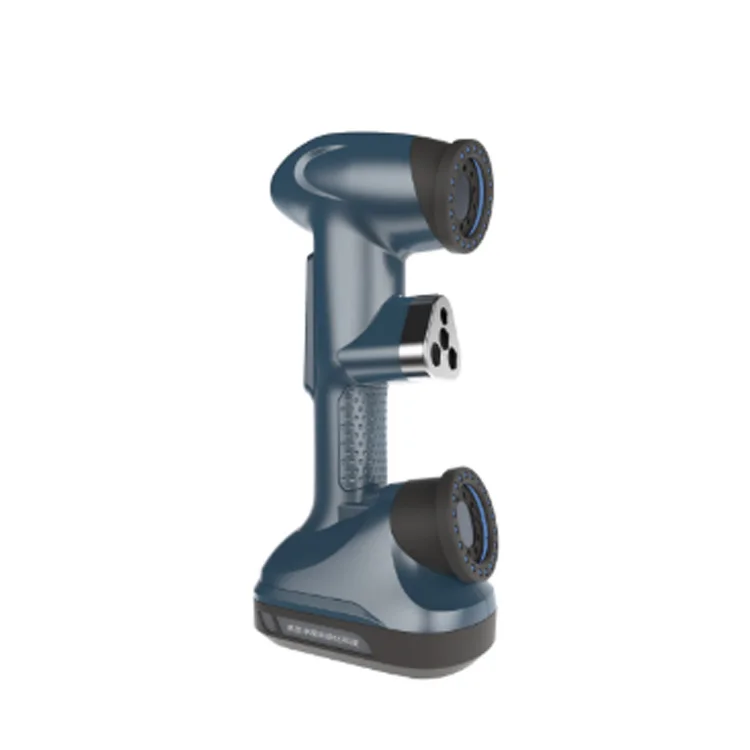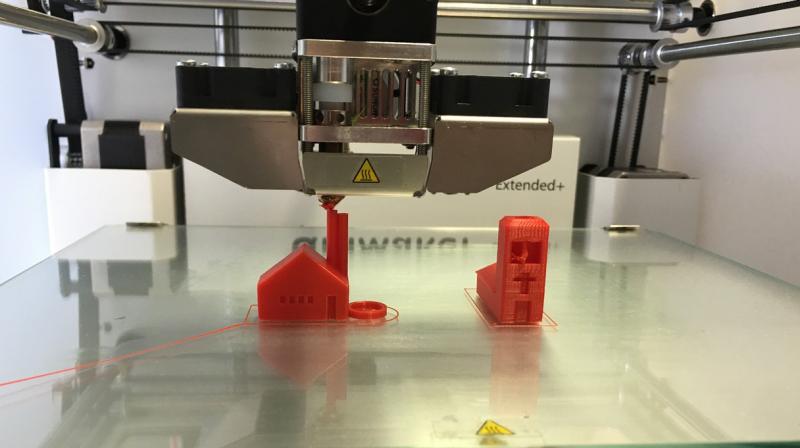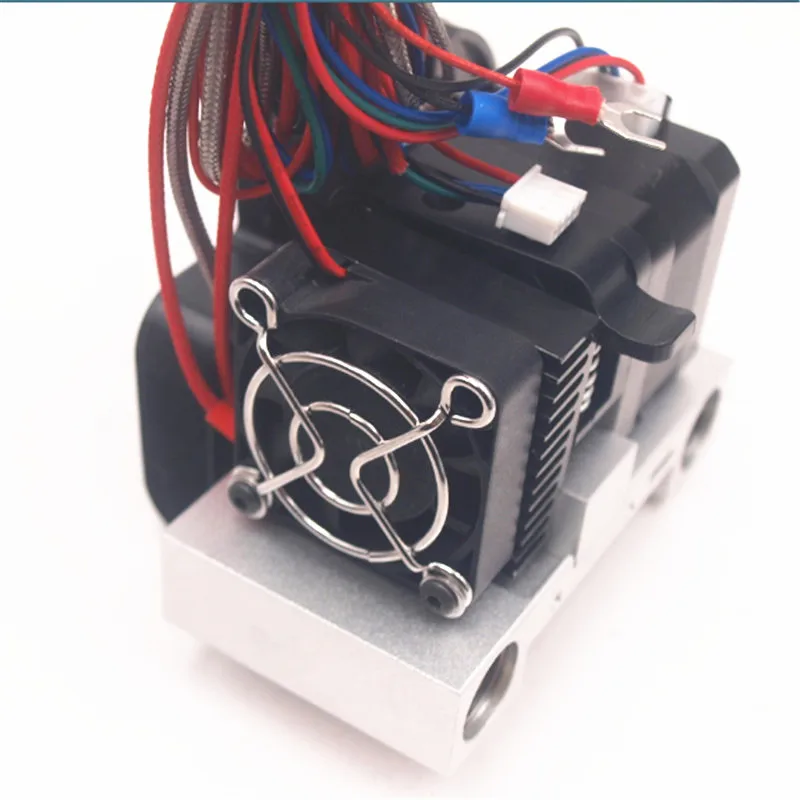3D printer additive manufacturing
What is 3D Printing and what is Additive Manufacturing?
What is 3D printing and additive manufacturing?
3D printing or additive manufacturing enables you to produce geometrically complex objects, shapes and textures. It often uses less material than traditional manufacturing methods and allows the production of items that were simply not possible to produce economically with traditional manufacturing.
If you’re new to 3D printing technology, it might be helpful to compare it to traditional methods of manufacturing.
The two principal traditional methods of manufacturing are:
- Subtractive Manufacturing (SM) is the controlled removal of material, like milling, for example.
- Formative Manufacturing (FM) takes a material, usually a plastic, and reshapes it to create a final product.
Compare these to 3D printing or additive manufacturing, which involves adding material in layers to create the final product.
Though additive manufacturing has been around for decades, it is still a relatively new technology compared to traditional manufacturing. In this guide, we hope to answer some of the most fundamental questions about 3D printing and additive manufacturing and give you all the information you need to begin harnessing the power of this exceptional technology.
Back to menu
What is 3D printing?
The term 3D printing is typically used to refer to all types of additive manufacturing. However, this is not quite accurate. Strictly speaking, 3D printing refers only to the transformation of a digital CAD (Computer-Aided Design) file into a three-dimensional physical solid object or part.
This object is produced by a 3D printer, which “translates” the CAD file into a 3D model. It typically does this by depositing material layer by layer in precise geometric shapes using a printhead, nozzle, or other printing technology. Each layer can be considered a thinly sliced cross-section of the final object being built.
Though it is most common to 3D print plastics, as you’ll see in our Complete Guide to 3D printing materials, this is just the beginning.
Back to menu
Data courtesy1
What are common 3D printing materials?
3D printing uses a huge variety of materials, especially plastics and metals. However, it is also on the cutting-edge of many new technologies and industries. For example, it is possible to 3D print in biomaterials to create complex tissue models. And, on a lighter note, it’s even possible to use edible materials, like chocolate.
Later in this guide, we will do a full rundown of the materials used in 3D printing.
Back to menu
What are 3D printed parts like?
Because it’s possible to 3D print in a variety of materials, the individual characteristics of a 3D printed part can be very different.
For example, if you’re 3D printing in HP 3D High Reusability PA 122, then you can produce strong, functional parts that will provide good chemical resistance and are ideal for complex assemblies, housings, enclosures, and watertight applications. But if you’re using HP 3D High Reusability TPA enabled by Evonik3, then the finished products will be flexible, lightweight parts with enhanced rebound resilience. The only limit really is the ingenuity of your designers and, of course, your specific design needs.
But if you’re using HP 3D High Reusability TPA enabled by Evonik3, then the finished products will be flexible, lightweight parts with enhanced rebound resilience. The only limit really is the ingenuity of your designers and, of course, your specific design needs.
Back to menu
Data courtesy4
The growth of the 3D printing market
What began as a niche and futuristic technology has today become widely used and even ubiquitous. Today, the use of 3D printing has grown to the point where almost all major manufacturers are incorporating or seeking to incorporate it into their design or manufacturing processes.
It was once used primarily for prototyping or for one-off manufacturing single, customized or spare parts. But today, it is used as an efficient, versatile, and reliable production technology for many large-scale industrial manufacturers.
And the 3D printing market is continuing to grow at speed. In fact, Wohlers Associates expects it to be worth $46.8 billion by 2026. (Source: Wohler’s Report 2021).
In fact, Wohlers Associates expects it to be worth $46.8 billion by 2026. (Source: Wohler’s Report 2021).
As it continues to develop, 3D printing technology will transform almost every major industry and fundamentally change the way we live, work, design and manufacture.
Back to menu
How has 3D printing technology developed?
Much of the growth in the 3D printing industry comes from the rapid growth of 3D printing in manufacturing, which was thought impossible when the process was first developed.
Today, new 3D printing materials, processes, and companies are appearing and developing constantly – you’ll hear about a myriad 3D printing technologies - Select Laser Sintering or SLS, Material Jetting, Binder Jetting, HP Multi Jet Fusion, to name just a few – and this coupled with continuous progress in the industry can make it hard for individuals and companies to keep up and to ensure that they’re making the most of this fast-developing technology.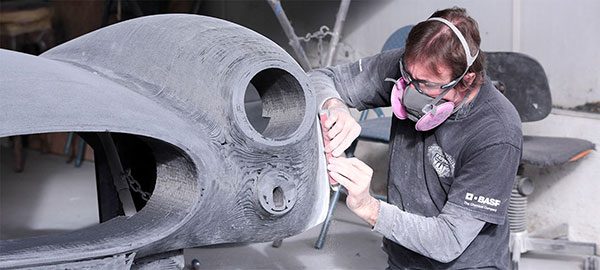
But keeping up is becoming increasingly important. As 3D printing delivers a mixture of better performance, more complex geometries, and more efficient production, it creates an exceptional opportunity for those able to use it to its potential and will result in those that don’t, quickly being left behind.
Back to menu
What are the benefits of 3D printing?
Almost every industry is being disrupted by the switch from analog to digital processes, and manufacturing is no different. 3D printing and additive manufacturing are helping to bring opportunity, flexibility, and efficiency to manufacturing operations.
Whether being used for building functional rapid prototypes, for small/medium series production, or for large-scale series production, 3D printing offers considerable advantages over traditional manufacturing.
For a start, product prototyping and development can be made significantly faster, product customization and functional integration can be achieved more quickly, and overall costs can be reduced, especially for tooling in the early stages of the product lifecycle.
And design and production improvements inevitably benefit the wider business. 3D printing can offer large-scale manufacturers from a wide range of industries the chance to differentiate themselves from their competitors with improved customer offerings, cost savings, and increased sustainability through on-demand production and virtual inventories.
Back to menu
Want to know more about 3D printing and additive manufacturing?
If you’re new to 3D printing, we understand it can be a lot to learn, but we believe that it is worth it. That’s why we’ve created this useful guide to 3D printing and the benefits that it could bring to your business. So, why not spend a little time here and learn about how this technology could help propel your business growth?
Want to continue learning?
Footnotes and disclaimers
- Data courtesy of Exiii
- HP Jet Fusion 3D Printing Solutions using HP 3D High Reusability PA 12 provide up to 80% powder reusability ratio, producing functional parts batch after batch.
 For testing, material is aged in real printing conditions and powder is tracked by generations (worst case for reusability). Parts are then made from each generation and tested for mechanical properties and accuracy.
For testing, material is aged in real printing conditions and powder is tracked by generations (worst case for reusability). Parts are then made from each generation and tested for mechanical properties and accuracy. - HP Jet Fusion 3D Printing Solutions using HP 3D High Reusability TPA enabled by Evonik provide up to 80% powder reusability ratio, producing functional parts batch after batch. For testing, material is aged in real printing conditions and powder is tracked by generations (worst case for reusability). Parts are then made from each generation and tested for mechanical properties and accuracy.
- Data courtesy of Autodesk Netfabb, Addit-ion, GKN Powder Metallurgy and Volkswagen.
Additive Manufacturing/3D Printing | NIOSH
Overview
Additive manufacturing technologies are rapidly expanding in use and accessibility for both businesses and consumers. As these technologies move from the laboratory to the factory floor, hospitals, schools, libraries, and home, larger numbers of people will be exposed to the technology and able to take advantage of it.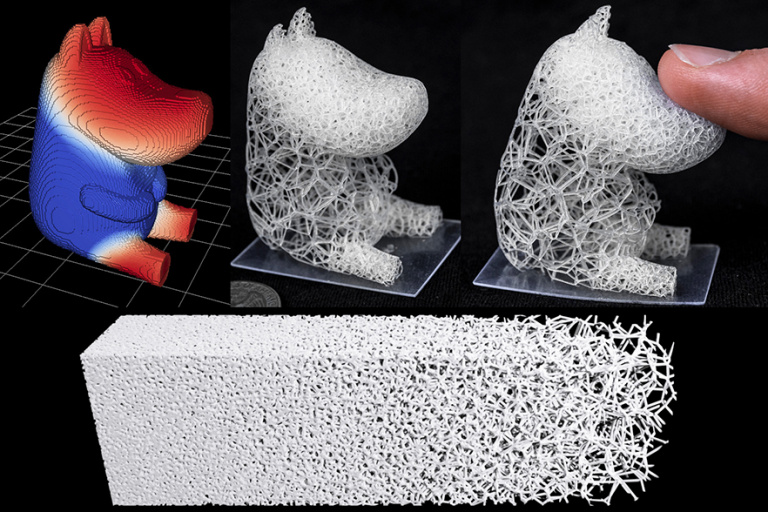 These people will also be exposed to any potential hazards that additive manufacturing may pose. The National Institute for Occupational Safety and Health (NIOSH) recognizes the promise of these technologies and is performing research to understand and minimize its potential health and safety risk to the American worker, and supporting the safe and responsible deployment of this new and exciting technology.
These people will also be exposed to any potential hazards that additive manufacturing may pose. The National Institute for Occupational Safety and Health (NIOSH) recognizes the promise of these technologies and is performing research to understand and minimize its potential health and safety risk to the American worker, and supporting the safe and responsible deployment of this new and exciting technology.
What is additive manufacturing?
Additive manufacturing (also called 3-dimensional printing) is a set of technologies that assemble objects from smaller pieces of material. Some examples of these technologies include fused filament fabrication (may involve extruding thermoplastic filament), vat polymerization (using an ultraviolet light to cure a polymer), or powder bed fusion (melting together metal, ceramic, or plastic powder with high-power lasers or other heat sources). Once just used for prototyping, these techniques are becoming less expensive and are seeing use in production as well, affecting the automotive, aerospace, electronics, medical, and consumer markets.
What kinds of hazards are related to additive manufacturing?
Additive manufacturing hazards vary widely depending on the technology and materials used.
- Inhalation of materials used in powdered form may occur. Additionally, materials such as solvents may emit volatile organic compounds, and some processes may promote emission of volatile organic compounds (thermoplastic extrusion, vapor polishing).
- Dermal exposure to hazardous materials is possible, especially with those in powdered or liquid form.
- Some flammable or combustible liquids and powders may create a risk of fire or explosion.
- Machine support and maintenance, loading of build materials, and handling of products may create risks of mechanical or ergonomic injury and stress.
- Other hazards may be associated with specific technologies and their use environments.
What is NIOSH doing to help?
NIOSH is conducting research on safe additive manufacturing to identify knowledge gaps, to develop robust science necessary to advance understanding in the field, and to best apply these developments in order to protect the American worker.
One pillar of this effort is traditional, laboratory-based research to answer key questions and solve major problems for safe additive manufacturing. Laboratory studies have indicated that fused filament fabrication desktop printers emit respiratory irritants, that filament material and coloration significantly affected volatile organic compound emission rates, and that printing with nanomaterial containing filaments led to emission of nanomaterial containing particulate matter (Stephens et al. 2013; Stefaniak et al. 2017; Yi et al. 2019; Dunn et al. 2020).
A second pillar is the comprehensive exposure assessments have been performed by the NIOSH Nanotechnology and Advanced Materials Field Studies Team at ten different additive manufacturing sites. Fieldwork allows NIOSH to fill knowledge gaps on real-world technologies, uses, and exposures. Please reach out to us if you are interested in finding out more information or having this team visit your facility.
NIOSH continues to perform both laboratory and field studies, to determine the hazards and potential for worker exposures while using emerging technologies such as additive manufacturing.
NIOSHTIC-2 is a searchable bibliographic database of occupational safety and health publications, documents, grant reports, and journal articles supported in whole or in part by NIOSH.
NIOSHTIC-2 search results on Advanced Manufacturing.
References
Stefaniak A, LeBouf R, Yi J, Ham J, Nurkewicz T, Schwegler-Berry D, Chen B, Wells J, Duling M, Lawrence R, Martin S, Johnson A, & M. Virji M. (2017) Characterization of chemical contaminants generated by a desktop fused deposition modeling 3- dimensional Printer, Journal of Occupational and Environmental Hygiene, 14:7, 540-550, DOI:10.1080/15459624.2017.1302589
Stephens B, Azimi P, El Orch Z, & Ramos T. Ultrafine particle emissions from desktop 3D printers. (2013) Atmospheric Environment, (79) 334-339. https://doi.org/10.1016/j.atmosenv.2013.06.050external icon
Yi J, Duling M, Bowers L, Knepp A, LeBouf R, Nurkiewicz T, Ranpara A, Luxton T, Martin S, Burns D, Peloquin D, Baumann E,Virji M, & Stefaniak A. (2019) Particle and organic vapor emissions from children’s 3_D pend and 3-D printer toys, International Forum for Respiratory Research, 31:13-14, 432-445, DOI: 10.1080/08958378.2019.1705441external icon
(2019) Particle and organic vapor emissions from children’s 3_D pend and 3-D printer toys, International Forum for Respiratory Research, 31:13-14, 432-445, DOI: 10.1080/08958378.2019.1705441external icon
Dunn KL, Dunn KH, Hammond D, & Lo S. (2020) Three-dimensional printer emissions and employee exposures to ultrafine particles during the printing of thermoplastic filaments containing carbon nanotubes or carbon nanofibers. Journal of Nanoparticle Research. 22, 46 (2020). https://doi.org/10.1007/s11051-020-4750-8
What is additive technology? The most important thing about 3D printing
Basics of 3D
Author: Semyon Popadyuk
Author: Semyon Popadyuk
What is additive manufacturing | Processes | 3D printing technologies | Consumables | Applications | Additive manufacturing in Russia
Additive manufacturing is the process of combining materials to create objects based on 3D model data, usually in layers, as opposed to the subtractive method and the molding method.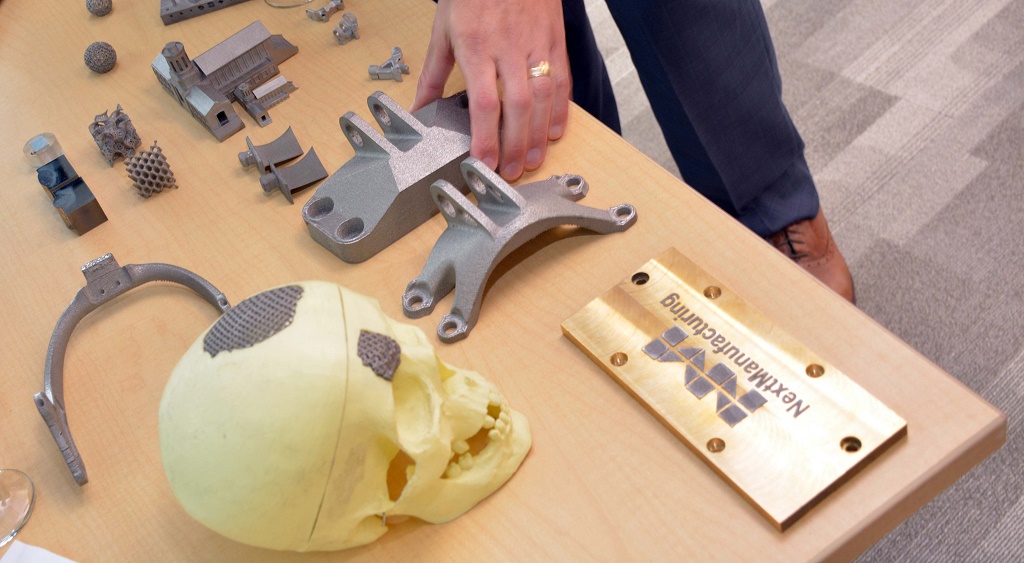 Terms such as additive manufacturing, additive processes, additive methods, additive layer-by-layer manufacturing, layer-by-layer manufacturing, freeform solids manufacturing, and freeform manufacturing have been used at various times. nine0003
Terms such as additive manufacturing, additive processes, additive methods, additive layer-by-layer manufacturing, layer-by-layer manufacturing, freeform solids manufacturing, and freeform manufacturing have been used at various times. nine0003
In this dynamic industry, new terms are rapidly emerging. 3D printing, according to the ISO/ASTM 52900 standard, is the production of objects by applying material with a printhead, nozzle, or other printing technology. In the past, the term was associated with low cost, low productivity machines. However, this is no longer the case: the terms "additive manufacturing" and "3D printing" mean the same thing.
"Additive Manufacturing" is an official industry term approved by the ASTM and ISO standards bodies, but "3D printing" is more common and has become the de facto standard. It is especially widely used in the media, the terminology of startups, investors and other communities. nine0003
Can 3D technology help you optimize production in your organization? Order iQB Technologies services: expert consultation, training, test 3D printing/3D scanning, equipment demonstration, site visits and others:
One of the advantages of additive technologies is the ability to create objects of complex shape and structure with high accuracy.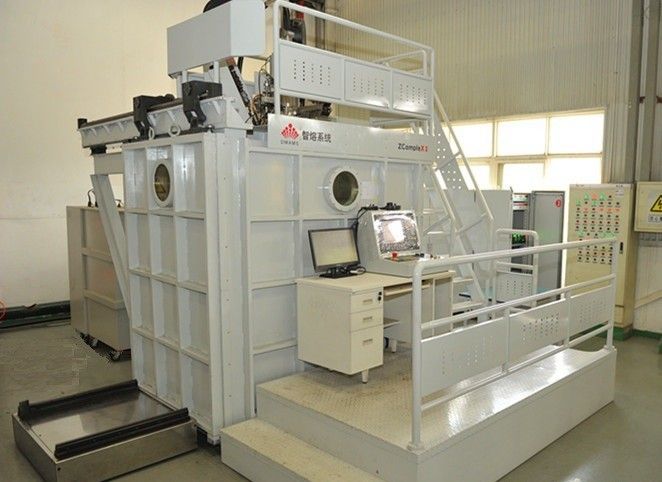
Processes
Additive manufacturing (AM) includes seven different processes. Products can be created in layers by: nine0003
- extrusion,
- spray (jet spray),
- UV Curing,
- lamination,
- fusion materials.
3D printing technologies
Modern FDM installations, such as the Discovery 3D Printer, allow you to print one-piece large-sized products up to 2.5 m
The main technologies used in the creation of products on additive installations: nine0003
- SLM (Selective Laser Melting) - selective laser melting of metal powder according to mathematical CAD models using an ytterbium laser;
- FDM (Fused Deposition Modeling) - a method of layer-by-layer deposition using a plastic thread or granules;
- SLA (Laser Stereolithography) - laser stereolithography, based on the layer-by-layer curing of a liquid material under the action of a laser;
- DLP (Digital Light Processing) - a stereolithographic 3D printing method using digital LED projectors; nine0028
- LCD (Liquid Crystal Display) - another type of photopolymer printing, when the photopolymer resin is illuminated by an LED UV matrix through an LCD screen mask;
- SLS (Selective Laser Sintering) - selective laser sintering under laser beams of particles of powdered material until a physical object is formed according to a given CAD model;
- Binder Jetting - layer-by-layer bonding of a composite powder (sand, polymer, metal, etc.
 ) with a binder; nine0028
) with a binder; nine0028 - MJP (MultiJet Printing) - multi-jet modeling with photopolymer or wax;
- CJP (ColorJet Printing) is a full-color 3D printing technology by gluing a special gypsum-based powder.
Consumables
The main materials used in additive processes are:
- thermoplastics in the form of filaments or granules;
- UV and photocurable liquid photopolymers; nine0028
- ceramic-filled liquid photopolymers;
- polystyrene powder;
- glass-filled, carbon-filled and metal-filled polyamides in powder form;
- wax;
- gypsum powder;
- sand in powder form;
- metal alloys in powder form, etc.
Applications of additive technologies
Additive technologies are used to create physical models, prototypes, samples, tooling and production of plastic, metal, ceramic, glass, composite and biomaterial components. The principle of operation of additive installations is based on the construction of thin horizontal layers from 3D models created using computer-aided design (CAD) systems and 3D scanners. nine0003
The principle of operation of additive installations is based on the construction of thin horizontal layers from 3D models created using computer-aided design (CAD) systems and 3D scanners. nine0003
Design and manufacturing enterprises use AP for the manufacture of consumer, industrial, medical and military products, and that's not all. Cameras, mobile phones, engine parts, car interiors, aircraft parts and components, machine tools and medical implants are just the beginning of the vast list of additive manufacturing products.
AM simplifies and speeds up the product development process. Companies are turning to additive technologies to reduce production time, improve product quality and reduce costs. As a visualization tool, 3D printing helps businesses determine the likelihood of creating defective or unsatisfactory products. In addition, methods, processes and systems for tooling are being developed. nine0003
3D printing is actively used in the aerospace, automotive, oil and gas industries, shipbuilding, medicine, jewelry and many other industries.
3D printing is actively used to improve the quality of injection molding tooling. In some areas, AM is used to obtain results that are unattainable using conventional machines. In other industries, AM is being used to create fabrication and assembly tools such as fixtures, fixtures, templates, and guides for drilling and cutting. nine0003
3D printing has a big impact on the production of many products. Enterprises, large and small, successfully apply technology to the production of finished products. According to experts, direct manufacturing will become the largest application area for additive technologies. This technology can affect production more than other traditional methods.
The industry continues to evolve with new methods, technologies, materials, applications and business models emerging. The geography and scope of industrial application of AP is expanding. Additive technologies have already had a huge impact on the development of design and manufacturing; in the future, their role will increase more and more. nine0003
The geography and scope of industrial application of AP is expanding. Additive technologies have already had a huge impact on the development of design and manufacturing; in the future, their role will increase more and more. nine0003
Additive manufacturing in Russia
The laboratory of additive technologies of Samara University performs unique metal 3D printing projects using the SLM Solutions installation / Photo: Ekaterina Vinokurova
In Russia, the 3D technology market is quite young, but it is already showing dynamic growth (according to Rosnano, about 30% per year). More and more companies are realizing the need to apply additive methods in manufacturing and research. There are organizations that are actively involved in the certification of materials and are already testing 3D printers of their own production. At the enterprises there are laboratories for the development and implementation of 3D solutions in certain sections of the technological cycle.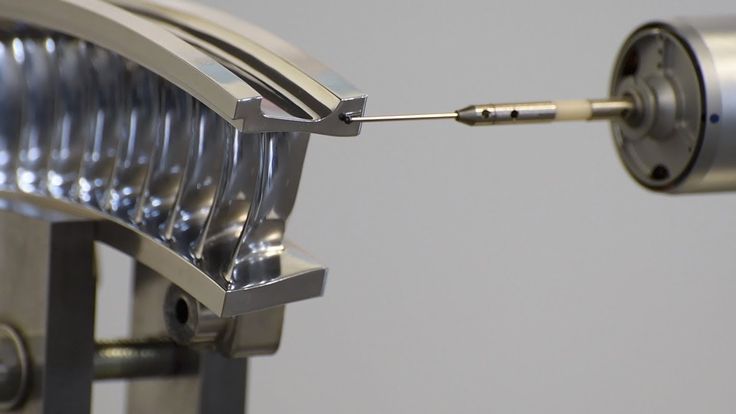 nine0003
nine0003
Today, we are not talking about a complete transition to additive technologies - so far they are able to effectively complement classical processes or replace them at some particular stage of the cycle. However, industry experts argue that in the near future, additive manufacturing will become an integral part of the technological processes in the enterprise.
Want to learn more about 3D technology? Subscribe to our blog and get advice from iQB Technologies experts: +7 (495) 223-02-06.
Article published on 08/16/2017, updated on 12/12/2022
What are additive technologies
The use of new technologies is the main trend of recent years in any area of industrial production. Every enterprise in Russia and the world strives to create cheaper, more reliable and high-quality products using the most advanced methods and materials. The use of additive technologies is one of the clearest examples of how new developments and equipment can significantly improve traditional production. nine0003
nine0003
- What are additive technologies
- Advantages
- Technologies and materials
- Additative technologies in Russia
- What are additive technologies
- Advantages
- Additive technologies in Russia
-
Improved finished product properties. Due to the layered construction, products have a unique set of properties. For example, parts created on a metal 3D printer in terms of their mechanical behavior, density, residual stress and other properties are superior to analogues obtained by casting or machining.
-
Great savings in raw materials.
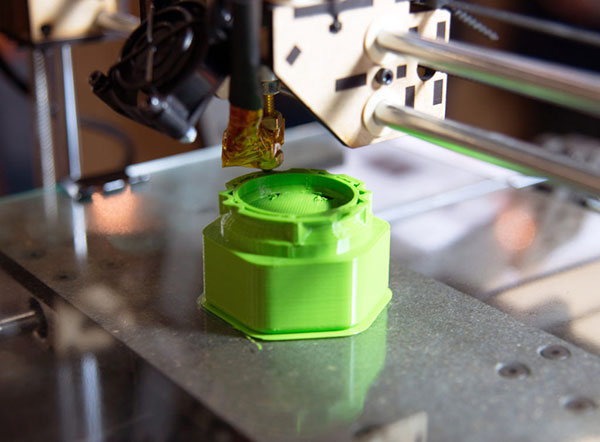 Additive technologies use almost the amount of material that is needed to produce your product. Whereas with traditional manufacturing methods, the loss of raw materials can be up to 80-85%. nine0003
Additive technologies use almost the amount of material that is needed to produce your product. Whereas with traditional manufacturing methods, the loss of raw materials can be up to 80-85%. nine0003 -
Ability to manufacture products with complex geometry. Equipment for additive technologies makes it possible to produce items that cannot be obtained in any other way. For example, a part within a part. Or very complex cooling systems based on mesh structures (this cannot be obtained either by casting or stamping).
-
Mobility of production and acceleration of data exchange. No more drawings, measurements and bulky samples. At the heart of additive technologies is a computer model of a future product, which can be transferred in a matter of minutes to the other side of the world - and production can immediately begin. nine0003
-
Great savings in raw materials. Additive technologies use almost the amount of material that is needed to produce your product. Whereas with traditional manufacturing methods, the loss of raw materials can be up to 80-85%.
-
Ability to manufacture products with complex geometry. Equipment for additive technologies makes it possible to produce items that cannot be obtained in any other way. For example, a part within a part. Or very complex cooling systems based on mesh structures (this cannot be obtained either by casting or stamping). nine0003
-
Mobility of production and acceleration of data exchange. No more drawings, measurements and bulky samples.
 At the heart of additive technologies is a computer model of a future product, which can be transferred in a matter of minutes to the other side of the world - and production can immediately begin.
At the heart of additive technologies is a computer model of a future product, which can be transferred in a matter of minutes to the other side of the world - and production can immediately begin.
. ?
Additive manufacturing technologies make it possible to produce any product in layers based on a 3D computer model. This process of creating an object is also referred to as "growing" due to the gradualness of the production. If in traditional production at the beginning we have a workpiece, from which we cut off everything superfluous in bulk, or we deform it, then in the case of additive technologies, a new product is built from nothing (more precisely, from an amorphous consumable material). Depending on the technology, an object can be built from the bottom up or vice versa, receiving different properties. nine0003
The general scheme of additive manufacturing can be represented as the following sequence:
The first additive manufacturing systems worked mainly with polymeric materials.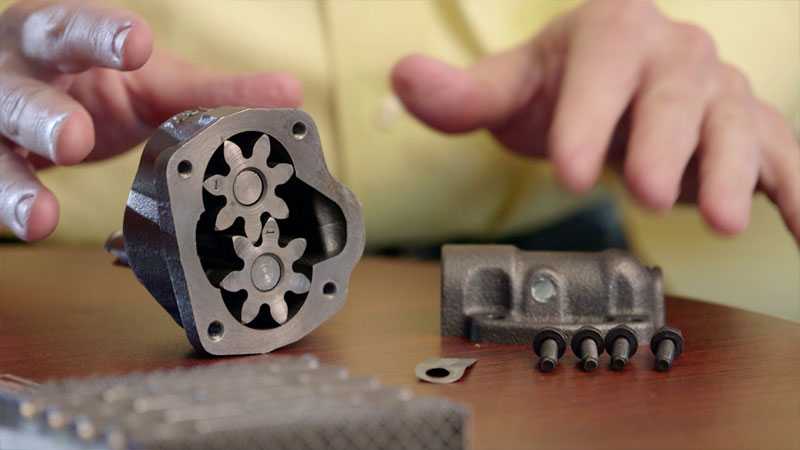 Today, 3D printers, which represent additive manufacturing, are able to work not only with them, but also with engineering plastics, composite powders, various types of metals, ceramics, and sand. Additive technologies are actively used in mechanical engineering, industry, science, education, design, medicine, foundry and many other areas. nine0003
Today, 3D printers, which represent additive manufacturing, are able to work not only with them, but also with engineering plastics, composite powders, various types of metals, ceramics, and sand. Additive technologies are actively used in mechanical engineering, industry, science, education, design, medicine, foundry and many other areas. nine0003
What is additive technology?
Additive manufacturing technologies make it possible to produce any product in layers based on a 3D computer model. This process of creating an object is also referred to as "growing" due to the gradualness of the production. If in traditional production at the beginning we have a workpiece, from which we cut off everything superfluous in bulk, or we deform it, then in the case of additive technologies, a new product is built from nothing (more precisely, from an amorphous consumable material). Depending on the technology, an object can be built from the bottom up or vice versa, receiving different properties. nine0003
nine0003
The general scheme of additive manufacturing can be represented as the following sequence:
The first additive manufacturing systems worked mainly with polymeric materials. Today, 3D printers, which represent additive manufacturing, are able to work not only with them, but also with engineering plastics, composite powders, various types of metals, ceramics, and sand. Additive technologies are actively used in mechanical engineering, industry, science, education, design, medicine, foundry and many other areas. nine0003
Advantages of additive technologies
Schematically, the differences between conventional and additive manufacturing can be depicted as follows:
Benefits of additive manufacturing
Improved finished product properties. Due to the layered construction, products have a unique set of properties. For example, parts created on a metal 3D printer in terms of their mechanical behavior, density, residual stress and other properties are superior to analogues obtained by casting or machining. nine0003
Due to the layered construction, products have a unique set of properties. For example, parts created on a metal 3D printer in terms of their mechanical behavior, density, residual stress and other properties are superior to analogues obtained by casting or machining. nine0003
Schematically, the differences between conventional and additive manufacturing can be depicted as follows:
Additive manufacturing technologies
Additive manufacturing is the process of growing products on a 3D printer from a CAD model. This process is considered innovative and is opposed to the traditional ways of industrial production.
Today, the following additive manufacturing technologies can be distinguished:
FDM (Fused deposition modeling)
Layer-by-layer construction of a product from a melted plastic thread. It is the most widely used 3D printing method in the world, and is used by millions of 3D printers, from the cheapest to industrial 3D printing systems. FDM printers work with various types of plastics, the most popular and affordable of which is ABS.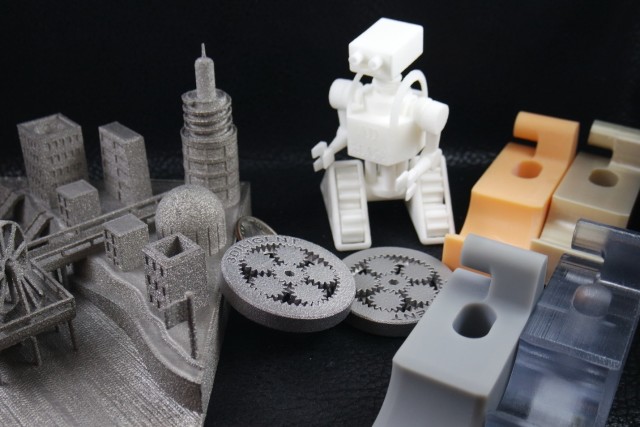 Plastic products are highly durable, flexible, and are great for product testing, prototyping, and for making ready-to-use objects. The world's largest manufacturer of plastic 3D printers is the American company Stratasys. nine0003
Plastic products are highly durable, flexible, and are great for product testing, prototyping, and for making ready-to-use objects. The world's largest manufacturer of plastic 3D printers is the American company Stratasys. nine0003
See all FDM printers >>
Additive manufacturing technologies
Additive manufacturing is the process of growing products on a 3D printer from a CAD model. This process is considered innovative and is opposed to the traditional ways of industrial production.
Today, the following additive manufacturing technologies can be distinguished:
FDM (Fused deposition modeling)
Layer-by-layer construction of a product from a melted plastic thread. It is the most widely used 3D printing method in the world, and is used by millions of 3D printers, from the cheapest to industrial 3D printing systems. FDM printers work with various types of plastics, the most popular and affordable of which is ABS. Plastic products are highly durable, flexible, and are great for product testing, prototyping, and for making ready-to-use objects. The world's largest manufacturer of plastic 3D printers is the American company Stratasys. nine0003
The world's largest manufacturer of plastic 3D printers is the American company Stratasys. nine0003
See all FDM printers >>
FDM example, ULTEM material 9085
FDM example, PEEK material
FDM example, ABS material
FDM example, ULTEM material 9085
3 Example
3 FDM printing, PEEK material
Example of FDM printing, ABS material
SLM (Selective laser melting)
Selective laser melting of metal powders. The most common metal 3D printing method. Using this technology, it is possible to quickly produce metal products with complex geometries, which are superior in their qualities to foundry and rolling production. The oldest manufacturers of SLM printing systems are the German companies SLM Solutions and Realizer. In Russia, 3DLAM is manufacturing such 3D printers. nine0003
See all SLM printing systems >>
SLM (Selective laser melting)
Selective laser melting of metal powders. The most common metal 3D printing method. Using this technology, it is possible to quickly produce metal products with complex geometries, which are superior in their qualities to foundry and rolling production. The oldest manufacturers of SLM printing systems are the German companies SLM Solutions and Realizer. In Russia, 3DLAM is manufacturing such 3D printers. nine0003
Using this technology, it is possible to quickly produce metal products with complex geometries, which are superior in their qualities to foundry and rolling production. The oldest manufacturers of SLM printing systems are the German companies SLM Solutions and Realizer. In Russia, 3DLAM is manufacturing such 3D printers. nine0003
See all SLM printing systems >>
SLM printing example, material - steel
SLM printing example, material - titanium alloy
SLM printing example, material - aluminum
SLM printing example, material - steel
SLM printing example, titanium alloy material
SLM printing example, aluminum material
SLA (short for Stereolithography)
Laser-assisted stereolithography, the curing of a liquid photopolymer material by laser action. This additive digital manufacturing technology is focused on the manufacture of high-precision products with various properties. One of the leading manufacturers of professional SLA printers is the Chinese company UnionTech. nine0003
nine0003
See all SLA printers >>
SLA (short for Stereolithography)
Laser-assisted stereolithography, the curing of a liquid photopolymer material by laser action. This additive digital manufacturing technology is focused on the manufacture of high-precision products with various properties. One of the leading manufacturers of professional SLA printers is the Chinese company UnionTech.
See all SLA printers >>
SLS (Selective laser sintering)
Selective laser sintering of polymer powders. Using this technology, it is possible to obtain large products with different physical properties (increased strength, flexibility, heat resistance, etc.). The largest manufacturer of SLS printers is the American concern 3D Systems.
See all SLS printing systems >>
Rapid prototyping technologies
Rapid prototyping technologies should be placed in a separate category. These are 3D printing methods designed to obtain samples for visual evaluation, testing, or master models for creating molds. nine0003
nine0003
MJM (Multi-jet Modeling) - multi-jet modeling using photopolymer or wax material. This technology makes it possible to produce burnt or smelted master models for casting, as well as prototypes of various products. Used in 3D Systems ProJet series 3D printers.
PolyJet - Liquid photopolymer curing with UV light. It is used in the Objet line of 3D printers from the American company Stratasys. The technology is used to obtain prototypes and master models with smooth surfaces. nine0003
CJP (Color jet printing) - layer-by-layer distribution of the adhesive on powdered gypsum material. Gypsum 3D printing technology is used in the ProJet x60 series 3D printers (formerly called ZPrinter). To date, this is the only industrial technology for full-color 3D printing. With its help, bright colorful prototypes of products are made for testing and presentations, as well as various souvenirs, architectural models.
SLS (Selective laser sintering)
Selective laser sintering of polymer powders. Using this technology, it is possible to obtain large products with different physical properties (increased strength, flexibility, heat resistance, etc.). The largest manufacturer of SLS printers is the American concern 3D Systems.
Using this technology, it is possible to obtain large products with different physical properties (increased strength, flexibility, heat resistance, etc.). The largest manufacturer of SLS printers is the American concern 3D Systems.
See all SLS printing systems >>
Rapid prototyping technologies
Rapid prototyping technologies should be placed in a separate category. These are 3D printing methods designed to obtain samples for visual evaluation, testing, or master models for creating molds. nine0003
MJM (Multi-jet Modeling) - multi-jet modeling using photopolymer or wax material. This technology makes it possible to produce burnt or smelted master models for casting, as well as prototypes of various products. Used in 3D Systems ProJet series 3D printers.
PolyJet - Liquid photopolymer curing with UV light. It is used in the Objet line of 3D printers from the American company Stratasys. The technology is used to obtain prototypes and master models with smooth surfaces. nine0003
nine0003
CJP (Color jet printing) - layer-by-layer distribution of the adhesive on powdered gypsum material. Gypsum 3D printing technology is used in the ProJet x60 series 3D printers (formerly called ZPrinter). To date, this is the only industrial technology for full-color 3D printing. With its help, bright colorful prototypes of products are made for testing and presentations, as well as various souvenirs, architectural models.
Additive technologies in Russia
Every year, domestic enterprises are increasingly using 3D printing systems for industrial and scientific purposes. Additive manufacturing equipment, intelligently integrated into the production chain, allows not only to reduce costs and save time, but also to start performing more complex tasks.
Globatek 3D has been supplying the latest 3D printing and 3D scanning systems to Russia since 2010. The equipment installed by our specialists works in the largest universities (MGTU named after Bauman, MEPhI, MISIS, Privolzhsky, SSAU and others) and industrial enterprises, institutions of the military-industrial complex and the aerospace industry.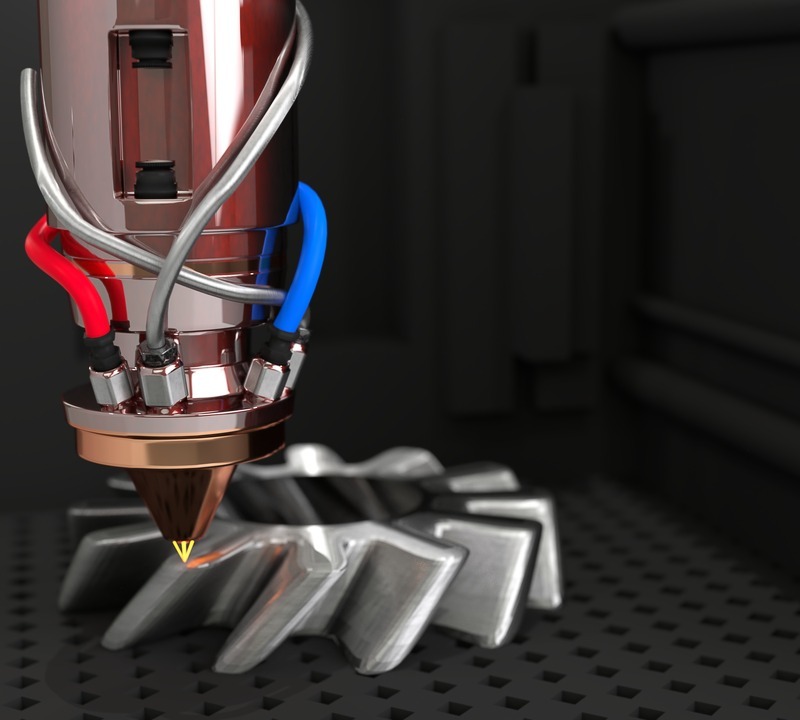 nine0003
nine0003
Report of the Rossiya TV channel on the use of the SLM 280HL installed by Globatek 3D specialists at the Samara State Aerospace University:
Additive technologies in Russia
Every year domestic enterprises increasingly use 3D printing systems for industrial and scientific purposes. Additive manufacturing equipment, intelligently integrated into the production chain, allows not only to reduce costs and save time, but also to start performing more complex tasks. nine0003
Globatek 3D has been supplying the latest 3D printing and 3D scanning systems to Russia since 2010. The equipment installed by our specialists works in the largest universities (MGTU named after Bauman, MEPhI, MISIS, Privolzhsky, SSAU and others) and industrial enterprises, institutions of the military-industrial complex and the aerospace industry.
Rossiya TV channel report on the use of SLM 280HL installed by Globatek 3D specialists at Samara State Aerospace University:
GLobatek 3D experts help professionals from various fields to choose 3D equipment that will most effectively solve the problems facing the enterprise.





